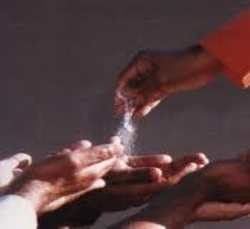In Addition
Vol 12 अंक 4
July / August 2021
1. Health Tips
Taking care of your nose and throat is vital!
“Only fragrant and sweet-smelling scents should be absorbed through the nose. When foul smell is inhaled disease sets in. If you inhale foul air, you are likely to breathe in disease-producing germs…When you get rid of the evils associated with pollution of speech, hearing, sight, thought, and action (arising from the misuse of the five sense organs) you will be able to become the Paramatma”…Sathya Sai Baba1
1. Nose and Throat - structure and function
Nose is an elegant protective organ that enables us to breathe for survival and to smell which plays a key role in taste and safety. It has two external nostrils divided by a septum that gives shape to it; nasal cavities 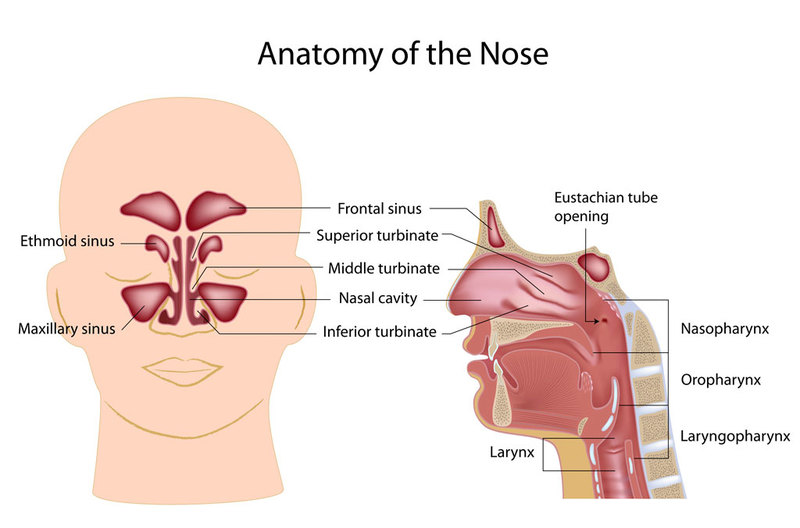 (fossae) lined with mucous membrane and tiny hairs (cilia) that filter the air; six turbinates (bony ridges) three on each side of the nose to warm and humidify the air breathed in and filter the dust and pollen; and four pairs of sinuses (air-filled cavities), two around the bridge of the nose and cheeks since birth, one around forehead that develops from seven years of age, and one deep inside behind the nose from teenage. Sinuses produce the mucus to moisten the nasal passage and are responsible for determining the sound and resonance of our voice. They serve as an air cushion to help protect the brain and eyes and control the amount of nitric oxide in your lungs.2,3
(fossae) lined with mucous membrane and tiny hairs (cilia) that filter the air; six turbinates (bony ridges) three on each side of the nose to warm and humidify the air breathed in and filter the dust and pollen; and four pairs of sinuses (air-filled cavities), two around the bridge of the nose and cheeks since birth, one around forehead that develops from seven years of age, and one deep inside behind the nose from teenage. Sinuses produce the mucus to moisten the nasal passage and are responsible for determining the sound and resonance of our voice. They serve as an air cushion to help protect the brain and eyes and control the amount of nitric oxide in your lungs.2,3
Throat (pharynx) is the passageway for air, liquids, and solids, and helps in speech. It consists of the larynx (voice box) in the front with its vocal cords which open into the trachea (windpipe); epiglottis (soft tissue above vocal cords) that prevents food and irritants from entering the lungs; and tonsils and adenoids (lymph tissue) on either side of the pharynx to protect against infection.2,3 Ear, nose, and throat are part of the upper respiratory system and function as one interconnected unit. Viruses and bacteria can easily move between the three, and disturbance in one can cause a problem in the other.4
2. Upper respiratory tract infection (URI)
URI involves the sinuses, nose, and upper throat. Normally it occurs when a virus or bacteria enters the body through the mouth or nose, common during autumn and winter. It is contagious and can pass to another person through touch, sneeze, or cough. Enclosed spaces where people gather eg, classroom, office, home or a vehicle can be high-risk areas. Proper handwashing and covering the face while coughing or sneezing may reduce its spread. Common symptoms are nasal congestion, sore throat, cough, fever, runny nose, sneezing, facial pain or pressure, body ache, headache, and itchy or 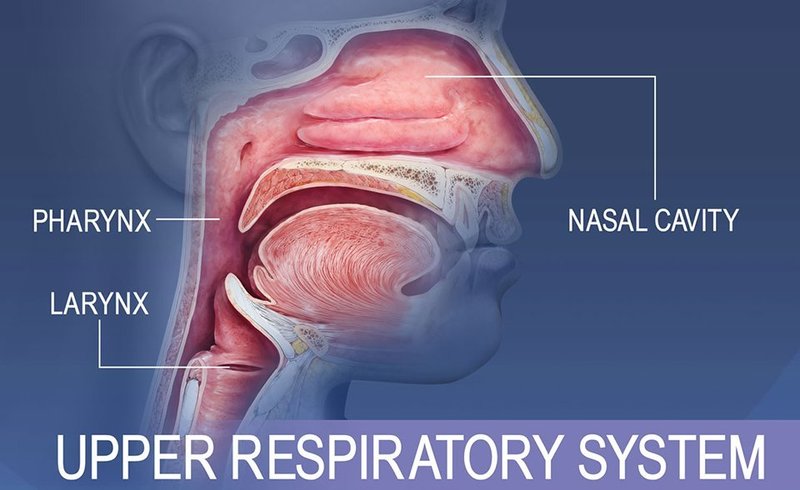 watery eyes. The most common URIs are cold and cough (refer to vol 9 #6 and vol 10 #2 for articles on “common cold” and “cough” respectively). URI is self-limiting, lasting 7 to 10 days, sometimes up to three weeks but needs medical attention in case of high fever, severe respiratory distress, or difficulty in swallowing.5,6
watery eyes. The most common URIs are cold and cough (refer to vol 9 #6 and vol 10 #2 for articles on “common cold” and “cough” respectively). URI is self-limiting, lasting 7 to 10 days, sometimes up to three weeks but needs medical attention in case of high fever, severe respiratory distress, or difficulty in swallowing.5,6
2.1 Sinusitis, inflammation of the sinuses, is mostly viral but could become bacterial if it does not settle within a week, and very rarely fungal. Symptoms are nasal obstruction causing difficulty in breathing through the nose, thick discoloured discharge from the nose, postnasal drainage, decreased sense of smell, and facial pressure or pain around the eyes, cheeks, or forehead. Acute sinusitis is usually due to common cold and chronic sinusitis is associated with other nose disorders (see #3 below), allergy-related respiratory issues like asthma, immune system disorder like HIV/AIDS or cystic fibrosis.7-10
2.2 Laryngitis is inflammation of the vocal cords mainly due to yelling or overuse of voice. Allergy, acid reflux, viral or bacterial infection may also cause it. Symptoms are hoarse or loss of voice, itchy or sore throat, and persistent cough (refer to vol 10 #2 for infectious coughs).11,12
2.3 Pharyngitis, generally known as sore throat, is inflammation of the pharynx, caused by viral infection like common cold or flu or a less common bacterial infection (strep throat). In addition to the painful, dry, itchy throat, symptoms could be swollen glands, fever, headache, runny nose, cough, and difficulty swallowing or speaking. Allergy, acid reflux, vocal overuse, or sleeping with mouth open for too long may also cause sore throat.12-17
2.4 Tonsillitis, rarely serious and most common in children18,19, is inflammation of the tonsils with symptoms similar to pharyngitis. Sometimes, adenoids also get swollen. A study has identified immunologic factors that 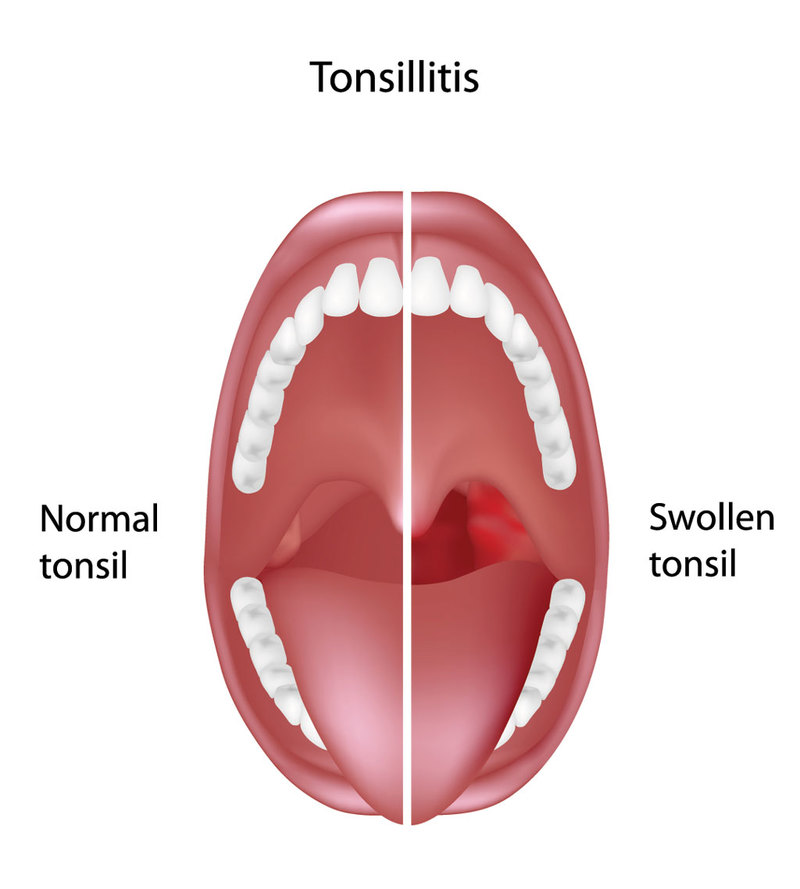 predispose certain children to recurrent tonsil infection caused by group ‘A’ streptococci bacteria.20 A rare complication of bacterial tonsillitis is quinsy (peritonsillar abscess), a severe inflammation of the tonsils, throat, or adjacent parts with swelling and fever.21
predispose certain children to recurrent tonsil infection caused by group ‘A’ streptococci bacteria.20 A rare complication of bacterial tonsillitis is quinsy (peritonsillar abscess), a severe inflammation of the tonsils, throat, or adjacent parts with swelling and fever.21
2.5 Influenza (flu) and COVID-19 are both contagious respiratory illnesses, affecting the upper as well as lower respiratory tract and also other body systems.5,22,23
3. Disorders of the nose
3.1 Allergic rhinitis (Hayfever) has four cardinal symptoms - often runny nose (rhinorrhoea), nasal obstruction, nasal itching, and sneezing. One may also have headache, increased mucus in the nose and throat, or sore throat. Main cause is exposure to allergens like dust mites, mould (fungus), pet dander (protein found in skin cells, saliva, or urine of pets), and pollen from trees and plants.24-26
3.2 Postnasal drip happens when excess mucus drips down the back of the throat causing discomfort. The nose, throat, and sinuses are constantly producing mucus which helps to keep the airways from drying out. In addition, one may have sore throat, cough, nausea, or foul breath. Postnasal drip is actually a good sign that the body is working to stay healthy by creating more mucus to flush out any invading germs or allergens.27
3.3 Nasal polyps are soft, painless, noncancerous growths on the lining of nasal passages or sinuses hanging down like teardrops or grapes. Small polyps are asymptomatic. Larger ones can block the nasal passage leading to breathing difficulty, lost sense of smell, and frequent infections. Polyps are normally caused by chronic inflammation or sinusitis but sometimes by asthma, allergy, drug sensitivity, or some immune disorder.28
3.4 Deviated nasal septum occurs when the septum gets displaced to one side, indicated by nasal congestion or blockage of either or both nostrils that does not respond to treatment, one-sided nasal pain, recurring sinus infection, and noisy breathing during sleep. Sometimes nosebleeds may occur due to dryness; in severe cases, it may affect breathing, cause headache, or lead to infection.29,30
3.5 Nosebleed (epistaxis) is loss of blood from the tissue that lines the inside of our nose. Nosebleeds are quite common in children under 10, pregnant women, and adults over 50 with medical conditions such as high BP, atherosclerosis or blood clotting disorder. Anterior bleeding may occur due to dryness in the air, frequent use of nasal sprays, nose picking or rubbing the nose too hard or blowing it with force, inserting an object into it, a hit during play, old or recent facial injury, high altitudes, allergy, or infection; it can normally be managed at home. Posterior nosebleed that occurs at the back of the nose or deep inside, especially after an injury when bleeding does not stop even after 20 minutes of applying pressure to the nose, needs medical care.31-34
Steps to control nosebleeds (see pictorial steps in the link33)
Sit upright to reduce the blood pressure in the veins of your nose and discourage further bleeding and tilt head forward to avoid swallowing blood.
Gently blow your nose to clear out any clotted blood. As a temporary measure, you can spray a nasal decongestant into the bleeding side of the nose, apply saline-based nasal gel, or shove cotton balls soaked in nasal spray or saline water or plain water with a little apple cider vinegar.
Pinch the soft part of the nose using the thumb and index finger for 5-10 minutes continuously,and breathe through your mouth. Place an ice pack on the bridge of the nose to slow down the bleeding.
If the bleeding does not stop,31-35 seek immediate medical help if the nosebleed is rapid or uncontrollable or occurs frequently, or it is accompanied by other symptoms like high BP, light-headedness, chest pain, or rapid heart rate.31-35
4. Tips for a healthy nose and throat
Keep the nose moist by applying plain petroleum jelly, coconut or sesame oil, or saline nasal spray; trim the fingernails of children to prevent injury and nosebleed. Blow your nose gently, never by force.31,36 Bathe your nasal passages daily to prevent and treat sinusitis, postnasal drip, and other nasal disorders; inhale steam to clear nasal passages but do not overdo as this might damage the tender mucous lining.37
Breathe always through your nose. Attend to any problem that obstructs nasal breathing,at the earliest (refer vol 10 #5 for details on right breathing). Mouth breathing should only be in exceptional situations for a short period as the body perceives this as an attack and turns on the immune system, thereby weakening it.38,39 Breathing exercises like pranayama help greatly in keeping the nose, throat, and sinuses healthy.
Rest your voice often and drink enough warm liquids to prevent laryngitis; when we are silent the vocal cords remain open providing an airway to breathe properly. Fight the urge to clear your throat and do not whisper as this may damage the larynx more than normal speech. Talking too loudly or too softly can stress your voice.40-42
Avoid exposure to dust and allergens and when pollen counts are high (during dawn and dusk, especially in the spring and early summer) to prevent allergic rhinitis.43
Additionally, for maintaining overall good health, follow guidelines on sleep/rest, exercise, diet, and water intake (See health tips in previous newsletters).
References and Links
1. Divine Discourse on “ Sanctify the body”, 20 May 1990, http://www.sssbpt.info/ssspeaks/volume23/sss23-10.pdf
2. Nose and throat anatomy: https://www.stanfordchildrens.org/en/topic/default?id=anatomyandphysiologyofthenoseandthroat-90-P02027
3. About nose: https://health.clevelandclinic.org/7-surprising-facts-nose/
4. ENT interconnection: https://www.bergerhenryent.com/the-interconnected-world-of-the-ear-nose-throat/
5. URIs: https://www.medicalnewstoday.com/articles/32388
6. URI: https://www.medicinenet.com/upper_respiratory_infection/article.htm
7. Chronic sinusitis: https://www.mayoclinic.org/diseases-conditions/chronic-sinusitis/symptoms-causes/syc-20351661
8. https://my.clevelandclinic.org/health/diseases/17701-sinusitis
9. Sinusitis viral/bacterial: https://health.clevelandclinic.org/killer-sinus-infection-how-to-tell-if-yours-is-viral-or-bacterial
10. https://www.medicinenet.com/sinusitis/article.htm
11. Laryngitis: https://www.mayoclinic.org/diseases-conditions/laryngitis/symptoms-causes/syc-20374262
12. Pharyngitis: https://www.medicalnewstoday.com/articles/324144
13. https://www.health.harvard.edu/diseases-and-conditions/sore-throat-pharyngitis-a-to-z
14. https://www.hopkinsmedicine.org/health/conditions-and-diseases/pharyngitis
15. https://my.clevelandclinic.org/health/symptoms/8274-sore-throat-pharyngitis
16. https://www.mayoclinic.org/diseases-conditions/sore-throat/symptoms-causes/syc-20351635
17. https://www.everydayhealth.com/sore-throat/
18. Tonsilitis: https://my.clevelandclinic.org/health/diseases/21146-tonsilitis
19. https://medlineplus.gov/tonsilitis.html
20. Study on tonsillitis in children: https://www.niaid.nih.gov/news-events/recurrent-tonsilitis
21. Quinsy: https://teachmesurgery.com/ent/throat/tonsilitis/
22. Covid-19 & RIs: https://www.webmd.com/lung/coronavirus
23. Covid-19 is multi-systemic: https://www.ncbi.nlm.nih.gov/pmc/articles/PMC7371790
24. Four cardinal symptoms of Rhinitis: https://www.ncbi.nlm.nih.gov/pmc/articles/PMC2846743/
25. Allergic rhinitis/Hay fever: https://my.clevelandclinic.org/health/diseases/8622-allergic-rhinitis-hay-fever
26. https://www.mayoclinic.org/diseases-conditions/hay-fever/symptoms-causes/syc-20373039
27. Postnasal drip: https://www.medicalnewstoday.com/articles/319636
28. Nasal polyps: https://www.mayoclinic.org/diseases-conditions/nasal-polyps/symptoms-causes/syc-20351888
29. Deviated Nasal Septum: https://www.mayoclinic.org/diseases-conditions/deviated-septum/symptoms-causes/syc-20351710
30. https://my.clevelandclinic.org/health/diseases/16924-deviated-septum
31. Nosebleed: https://my.clevelandclinic.org/health/diseases/13464-nosebleed-epistaxis;
32. Effectively prevent and manage nosebleed: https://www.medanta.org/patient-education-blog/are-nosebleeds-a-sign-of-cancer/
33. Pictorial steps to stop nosebleed: https://www.nationaljewish.org/conditions/health-information/health-infographics/12-nose-bleed-tips
34. https://newsnetwork.mayoclinic.org/discussion/home-remedies-4-steps-to-stop-a-nosebleed/
35. Nosebleed Dos & Donts: https://www.med.umich.edu/pdf/Nosebleed-Dos-and-Donts.pdf
36. Relieve dry nose: https://breathefreely.com/how-to-relieve-a-dry-nose/
37. Nasal Irrigation: https://www.health.haravard.edu/diseases-and-conditions/what_to_do_about_sinusitis
38. Nasal breathing best: https://health.clevelandclinic.org/breathe-mouth-nose/
39. Complications of mouth breathing: https://www.healthline.com/health/mouth-breathing
40. Rest your voice: https://www.healthline.com/health/home-remedies-for-laryngitis
41. Silence helps: https://health.harvard.edu/a_to_z/vocal-cord-disorders-a-to-z
42. Take care of your voice: https://www.nidcd.nih.gov/health/taking-care-your-voice
43. Avoid exposure: https://www.healthline.com/health/allergic-rhinitis
2. Updates on Covid-19 remedy (original article published in Vol 11 Issue 2, remedies last updated in Vol 0 Issue 3, also sent via email 9 June 2021)
While the world is trying to come to grips with Delta variant of Covid-19, many cases of yet another mutant called Delta Plus have been reported. While the scientists are still researching the newest variant, preliminary studies seem to suggest that apart from the usual symptoms viz, dry cough, fever, tiredness, aches and pains, skin rashes, toes and fingers discoloration, sore throat, conjunctivitis, loss of taste and smell loss, diarrhoea, and headache, chest pain, breathlessness, shortness of breath, and speech loss, Delta Plus patients also exhibit nausea, joint pains, and hearing impairment. In view of this, the two IB combos have been modified, given below is the final version of the complete treatment protocol.
A. Immunity Booster (IB) for prophylaxis and treatment:
For those having 108CC box: CC3.2 Bleeding disorders + CC4.6 Diarrhoea + CC4.10 Indigestion + CC5.2 Deafness + CC7.2 Partial Vision + CC9.4 Children’s diseases + CC10.1 Emergencies + CC11.3 Headaches + CC11.5 Mouth infections + CC12.2 Child tonic + CC15.1 Mental & Emotional tonic + CC18.1 Brain disabilities + CC19.3 Chest infections chronic + CC19.4 Asthma attack + CC19.5 Sinusitis + CC19.6 Cough chronic + CC19.7 Throat chronic + CC21.11 Wounds & Abrasions
For those without 108CC box but having SRHVP: NM6 Calming + NM25 Shock + NM80 Gastro + BR4 Fear + SM18 Digestion + SM20 Eyes + SM26 Immunity + SM27 Infection + SM31 Lung & Chest + SM35 Sinus + SM39 Tension + SM40 Throat + SR268 Anacardium 30C + SR272 Arsen Alb 30C + SR278 Cactus 30C + SR279 Cadmium Sulph 30C + SR291 Gelsemium 30C + SR298 Lachesis 30C + SR301 Mercurius 30C + SR304 Oxygen 200C + SR318 Thuja 200C + SR383 Cuprem Met 30C + SR408 Secale Corn 6X + SR458 Brain Whole + SR463 Cranial Nerves + SR566 Fungi-Pathogenic
Dosage: For prophylaxis: BD on waking and before sleep. Give OD on waking to those fully vaccinated or recovered from Covid-19 or living in a country where there is no Covid.
For treatment: A dose every hour for 6 hours followed by 6TD, tapering down on improvement to QDS - TDS - BD - OD. Follow same dosage for those with post-Covid complication such as fungal infection or blood clots.
For those with Covid-19 symptoms but tested negative or test not taken: start at 6TD, then taper down as above.
Warning: Any allopathic treatment should be continued and NOT discouraged at any time.
B. Recuperation: When a patient has recovered but has little energy and feels tired in body and mind or develops a complication, give the following until the patient feels healthy and strong:
For those having 108CC box: CC3.1 Heart tonic + CC3.7 Circulation + CC4.1 Digestion tonic + CC11.3 Headaches + CC12.1 Adult tonic + CC15.1 Mental & Emotional tonic + CC19.3 Chest infections chronic + CC19.4 Asthma + CC19.6 Cough chronic + CC19.7 Throat chronic + CC20.1 SMJ tonic + CC21.11 Wounds & Abrasions
For those without 108CC box but having SRHVP: NM2 Blood + NM6 Calming + NM7 CB7 + BR3 Depression + SM18 Digestion + SM26 Immunity + SM31 Lung & Chest + SR269 Antim Tart 30C + SR272 Arsen Alb 30C + SR298 Lachesis 30C + SR318 Thuja 200C + SR351 Kali Carb 30C + SR389 Kali Bic 6X + SR408 Secale Corn 6X + SR566 Fungi-Pathogenic
Dosage: TDS, tapering down on improvement but continue IB at OD on waking with a gap of at least 20 minutes between the two.
C. To avoid side effects of vaccination:
For those having SRHVP: SR318 Thuja 30C.
For those with only 108CC box: CC9.4 Children’s diseases
Dosage: OD at night, start two days before vaccination and for 10 days from day of vaccination, while taking IB at OD on waking during this period.
In case a patient develops side effects (symptoms being, extreme soreness in arm, tiredness, headache, aches & pains, nausea or vomiting), usually a day or two after vaccination, additionally take the Recuperation combo as given above.
D. For increasing the oxygen saturation level, but continue all other treatments:
For those having SRHVP: SR304 Oxygen 200C in water
For those with only 108CC box: CC19.1 Chest tonic in water
Dosage: every ten minutes until oxygen level reaches 90, then every hour as long as needed.
3. Virtual Conference of Regional Coordinators (RCs) of India – 13 June 2021
The fourth bi-monthly virtual conference of 21 RCs was held on 13 June 21. The primary function of RCs is to establish a strong base for the administration of Sai Vibrionics and at the same time be the engine for the 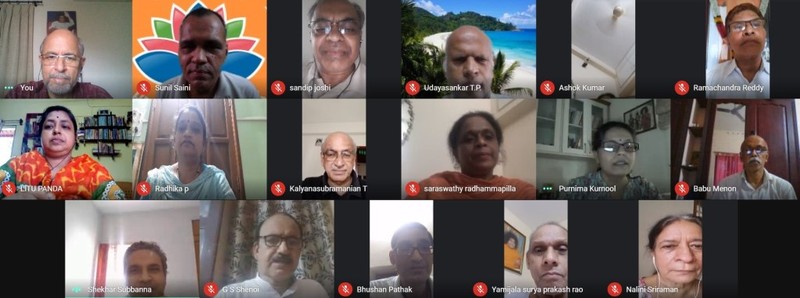 growth of Vibrionics. The team of RCs acts as an interface between the practitioners and the IASVP wing of the organisation. Over the last six months, the conference has deliberated, discussed, and executed several administrative tasks like distribution of IBs to sevadals of different states coming to Prashanti Nilayam, IASVP membership drive, organising regional meetings, and initiating ‘Spread the word campaign’ in their respective regions. Valuable feedback received has helped in streamlining various standard operating procedures. It was decided to initiate a nationwide drive to standardise the information in our practitioners’ database. This will help our Practitioners Info department to give a quicker response to requests from patients needing to contact practitioners in their respective areas. These meetings of RCs also help to bring the practitioners together to form a close-knit community. The positive contribution made by the conference is already visible in the increased number of attendees at refresher workshops.
growth of Vibrionics. The team of RCs acts as an interface between the practitioners and the IASVP wing of the organisation. Over the last six months, the conference has deliberated, discussed, and executed several administrative tasks like distribution of IBs to sevadals of different states coming to Prashanti Nilayam, IASVP membership drive, organising regional meetings, and initiating ‘Spread the word campaign’ in their respective regions. Valuable feedback received has helped in streamlining various standard operating procedures. It was decided to initiate a nationwide drive to standardise the information in our practitioners’ database. This will help our Practitioners Info department to give a quicker response to requests from patients needing to contact practitioners in their respective areas. These meetings of RCs also help to bring the practitioners together to form a close-knit community. The positive contribution made by the conference is already visible in the increased number of attendees at refresher workshops.
4. First Anniversary of Virtual Karnataka Seminars - 6 June 2021
To commemorate one year of virtual monthly meetings the Karnataka practitioners held a special session on 6 June 2021. A total of 90 participants, the highest attendance in any vibrionics virtual meet, included many from outside Karnataka and some senior practitioners specially invited for the occasion. The Karnataka Regional Coordinator (RC) highlighted that during the preceding year, they revised and discussed in detail the AVP manual and the 21 categories in the 108CC book including chronic diseases and their causes with emphasis on diet and lifestyle changes. Three practitioners got the opportunity to share that they had benefitted enormously from these meetings and this seemed to be echoing the thoughts and feelings of other practitioners. Dr.Aggarwal recounted a few personal experiences with Swami that led to the emergence of vibrionics. He stressed that love is the basis of healing and advised practitioners to connect with Swami and to work more from the heart than from the head.
The practitioners’ doubts were cleared and 1 or 2 take-home points are included here.
- As the Immunity booster IB is extremely important, it is advised to be taken first thing in the morning as there is no other vibration in the mouth, so it works efficiently and also difficult to forget at that time.
- CC17.2 Cleansing can produce a strong pullout and should be given only when the patient is in a relatively good state of health. It is recommended that the patient is first treated for any specific disorder before giving this combo.
- While treating skin conditions, special care should be taken owing to the possibility of strong aggravation of symptoms (1st type of pullout). Give one dose and wait, then build up the dosage slowly based on the feedback from the patient.
As part of the continuous learning process, this was a highly enlightening session. Many practitioners were so inspired they requested many more sessions like this. The online sessions not only keep the practitioners connected to vibrionics but also provide them an opportunity to know one another and work as a family. Many activities discussed in such meetings are further taken up by smaller groups so as to take vibrionics forward. The Karnataka RC expressed gratitude to Baba for His immense blessings in making this seminar a resounding success.
5. In Memoriam
Mrs Aparna Choudhuri 00036 at the age of 79, graciously merged with Swami on 23 February 2021. She was fully aware and connected with Him till her last moments. She had been with vibrionics since 1994 from the time of its very inception. She served her patients with humility in and around Puttaparthi for over two decades. Truly leading a life of devotion and service, her contribution to vibrionics will always be acknowledged with gratitude. She will be remembered for her Handbook on Union with God, a book on healing through mudras (finger postures).
Sri Manish Gupta 10462 succumbed to colon cancer on 8 June 2021. We are deeply saddened to lose a very valued colleague at the young age of 47. Ever since coming into Swami’s fold in the 90s, he had been a regular at Prashanti Seva and an accomplished bhajan singer. His journey with vibrionics began in 2009 when he attended a workshop in Rajasthan. Always ready to do any assigned task with passion and energy, he became a regional coordinator in 2018 and subsequently in Aug 2019 organised a state-level workshop to infuse new energy into his team. He was a dedicated, sincere, and hard-working devotee and always stood by his commitments. Our hearts and prayers go out to his wife and two daughters at this time of bereavement.
